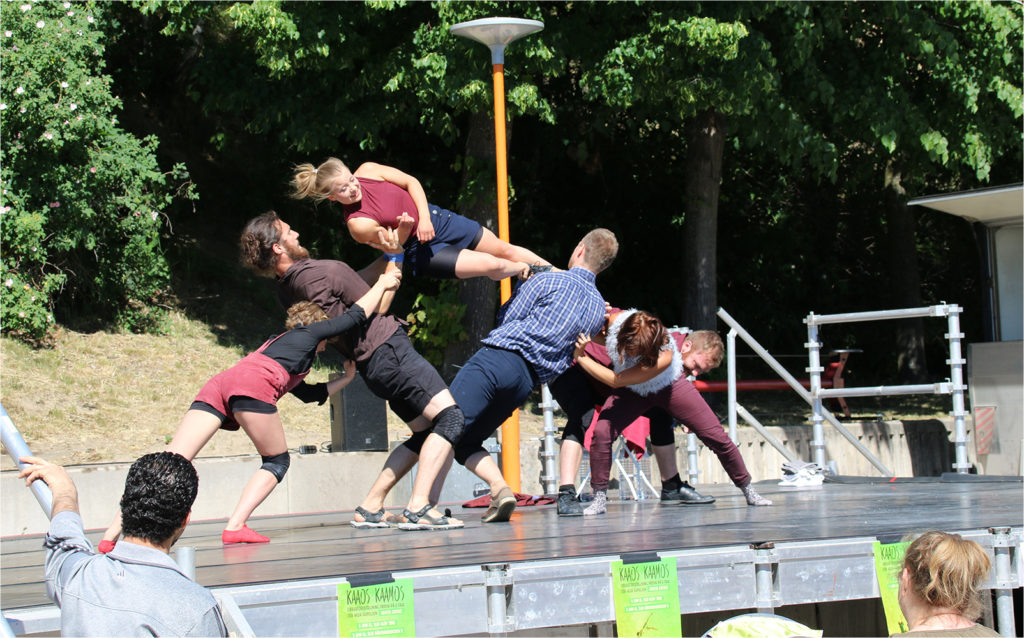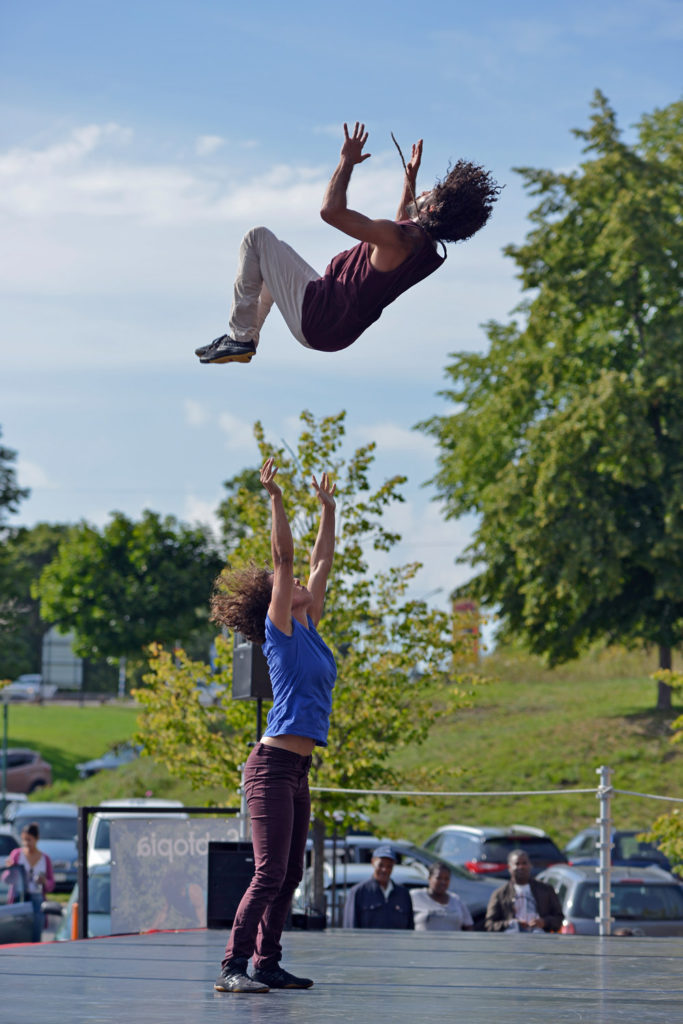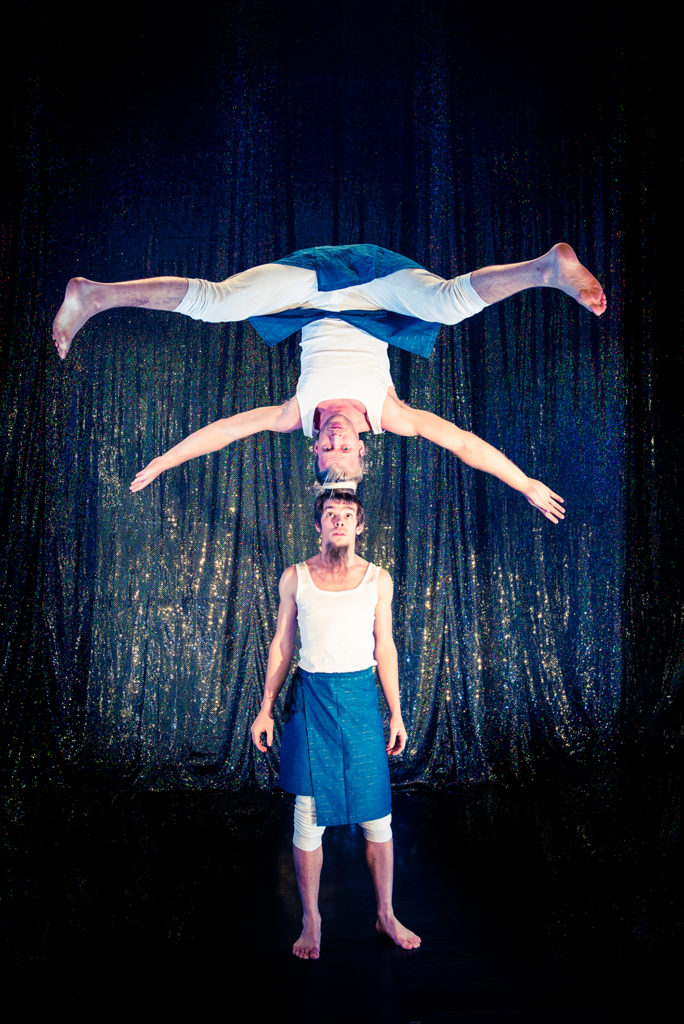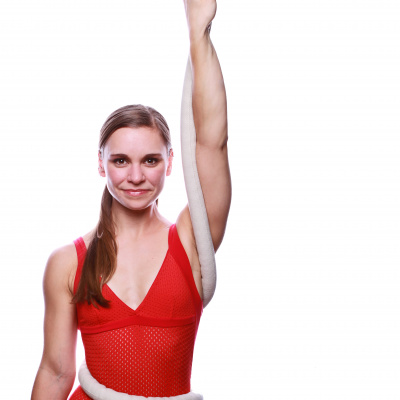Kiki Muukkonen and Subtopia: Carving New Paths for the Circus Movement
Subtopia is an artists’ and art organization’s mecca nestled near the east coast of Sweden. It is a facilitator of dreams and culture for a myriad of art forms, particularly contemporary circus. On any given day, Subtopia is home to around 200 people from 80 organizations. With a thoughtful and enchanting cadence, Kiki Muukkonen, Artistic Director of Circus, told me about how she stumbled into what has become a long career as an advocate of circus arts and is experimenting with new ways to bridge the gap between artists and presenters.
Madeline Hoak: What does Subtopia offer artists and art organizations, and how is circus part of that?

Kiki Muukkonen: What we do is we rent or let spaces to arts organizations, and then we also support them in different ways. We call it “arts clusters”, which means it’s an organization that houses arts and culture organizations. There’s a lot of circus, yes, but there’s also film, puppetry, dance, theater, music — there’s basically everything in the arts represented in the organizations.
We have a department, which is me and two more people, that has a special focus on circus. We present circus in the venue, we organize the circus festival, we have the circus showcase and we also have residency programs and different support programs for circus arts and circus artists.
MH: How did you end up at Subtopia?
KM: By coincidence. I came from theater, and I had been working as an actress and doing a little bit of directing. Me and my friends, for some years, had this little fringe theater in Stockholm with 100 seats. We were running, organizing, doing public shows, and I was working in the city theater for a while with production and production management, so to speak.
To make a long story short, at one point I thought, I just need to move on. I was thinking of leaving arts all together. I was waiting for something else to happen. I was offered this job for six months at Subtopia to coordinate a circus project, and that’s thirteen years ago!

I stayed because I really like the context, the community of circus artists and everything that it entails and also getting to know an art form that I really knew nothing about, that I didn’t understand but was still so close to what I had done before but still so different. So it was intriguing to come in to this art form. Also, at that point, there was so much momentum going on. It was almost like becoming part of a movement — not almost — it was like becoming part of a movement. There was so much development, and there were so many things one could do to support and help that development: to develop infrastructure, presenting artists, supporting arts. Having been an artist myself, I really have a passion for supporting artists in developing their work, their activities, their companies inhuman ways. Often you have to do everything yourself. You create your work, and then you also need to promote it and sell it. And the programmer’s world and the market can be quite hard to encounter. The relations between artists and presenters is not always so easy. There are a lot of misunderstandings and different perspectives. I found that there was a gap that I could be part of somehow bridging. So a lot of my work has been quite focused on better relations between artist and presenters.
MH: What helps create a bridge between artists and presenters?

KM: One basic thing is to do projects or activities that involve both artists and presenters — to place us on the same floor, around the same table, on equal level of communication — and to organize things in ways where speaking to each other as human beings is unavoidable. That can take shape in different ways. It could be having a showcase where there’s a sauna. Or, we had a European project in which artists and presenters were interviewing each other, expressing their prejudice about each other, and then talking about the prejudice, putting their prejudice on the table. It was quite a challenging thing we did! But really good for me and for many other people that participated.
MH: What was the segue like as you were learning about the circus arts?
KM: Joyful! I was exploring circus as a language in itself, encountering it and trying to make sense of it. Often I feel like my body makes more sense of circus than my head. My body thinks it can do things that I actually can’t do, for instance.
Composing with circus I find really challenging, and it’s intriguing to see how this is done. One of the challenges is that so many circus artists are quite young when they create shows or performances, and I’m not twenty-five anymore — I’m soon fifty — so the stories of twenty-five year olds may not be so interesting to me on a personal level. But it’s really hard to find mature artists within the circus field because it’s so physical. I miss mature artists, and I also miss my stories, the stories about maturing and what comes with that. There are more circus artists though that are [older] — a second, third generation — more people in their forties who have been circus artists for a long time and who now start creating their own work. And I love it, because I can relate so much more to what they’re doing and what they’re talking about. So that’s one thing I look forward to. I really look forward to when the art form grows older, and we have older people creating.

Coming from theater, I’ve had a hard time, and I can still say that I have a hard time sometimes, understanding circus. It helped a bit actually when I took some classes in handstand. I didn’t do it with any specific purpose to understand anything, it was just like, “Hm, I would like to try that,” and I realized how difficult it is! How crazy, crazy, crazy difficult it is! I never realized. I took two classes from a Russian handstand teacher. It was great to do it. Because when you’re a spectator and only on the side of watching, there’s no way to understand what it takes.
It also made me understand a bit more about the conditions — you can’t create the same way as you create theater or dance even… Not all circus shows have to be physically challenging of course, but if you want to do anything with any challenging things, it’s a totally different story from start to end. And that I’m still learning about.
MH: You mentioned that thirteen years ago you felt like a movement was happening within circus. What does it feel like now?
KM: Well, in Sweden, circus is getting more established. Now it’s counted as one of the performing arts in the arts council structures and so on. So it’s more part of the scene in that way. The scene is not so big, it’s still quite small, but there are more and more venues programming circus. More and more companies have been created and more and more work being created and toured. You could say it’s established, but in [the] early stage of being established. Different countries all have their different places where it’s at. Maybe Sweden was then where Germany is now, I would say.
MH: And where do you think it’s going?

KM: Well, I would be guessing of course. When it comes to the art itself, it seems that the different performing arts are mixing more and more. Things are more multidisciplinary in themselves: theater, dance, music, installation art, circus. It’s not a new thing at all, but things are getting less and less separated. That is a development that will lead into the future. Whatever that would result in, I don’t know. Could also be that there’s an anti-reaction to that and that there would be more pure circus coming out because we want to return to the nostalgic idea or the “truth” of whatever the circus disciplines might be.
MH: What do you think audience members get from a production, pure or hybridized, that is unique to circus?
Well, number one, circus is not representing anything else than circus. You experience it now, and it means what it is. It’s not representational. As an actor, Ben would pretend to be John. And then he’s telling the story about John. But a juggler is juggling. It’s not representing something else. So it’s a highly present, highly true meeting with something that happens in the now. It’s not trying to tell something about something else. It only talks about itself. It’s a different kind of experience, and I don’t mean to say that one is better than the other, but it’s very direct. Personally, I find mixing circus and theatre, I’ve never seen it work. Maybe once or twice in my whole career. As soon as you start mixing circus and theater, normally you’re in trouble because theater is representational and circus is not. And they don’t mix well, in my experience. It builds meaning in a different way than theater. It’s more similar to dance in that way. It’s movement. But then there’s the magic of circus, which is doing crazy things, doing impossible things, doing magic things or doing things with your body that shouldn’t be possible! Adding to that, which is almost always part of circus, thetrick, is really hard to deal with on a dramaturgical level.
As soon as you start mixing circus and theater, normally you’re in trouble because theater is representational and circus is not. And they don’t mix well, in my experience.
But also, I think there’s something really special with circus artist and relating their work to the audience. And it’s always risky to generalize, but I do quite often find a generosity between the stage and the audience, a specific kind of generosity and wish to connect. Of course actors and dancers want to connect also, I’m not saying that they wouldn’t, but there’s something different there. Failure [in circus] is always present, which connects us all. The fear of failure or the presence of failure is always present for all of us.
MH: What projects do you have on the horizon?
KM: At the moment, it’s a festival that we’re developing because it’s not just a festival, it’s called CirkusMania, and it’s the second year that we’re doing it.

We are collaborating, trying to get artists and venues to co-curate, co-program a festival. Ten days where many venues, many theaters and artists can program shows themselves, and we market it as a festival. We don’t want it to be something where people go out for free. We want them [the venues] to pay the artists. Not to have artists renting stage and participating (if some artists want to do that they’re welcome to), but to really have various [venues] program circus around the whole region.
We are traveling, meeting different theaters, suggesting they take part. We also offer technical advice . When we go visit (we is me, and our producer the coordination and our TD [technical director]), as a group, we talk about their space and they can ask their questions to our TD, talk about different shows that they could or could not book there. We also talk about the audience they have. They will be the ones programming in the end, we’re not programming it for them, but we are supporting them in the ways they need in terms of knowledge and know how.
It’s also about the artists speaking to the programmers, and to really get artists to understand the importance of having good communications with the venues about what they need and why. And not to just send a rider that doesn’t really say everything… If they send that to a venue that isn’t used to it then they’re going to have big problems when they go there.
At the moment we collected fifteen venues that will be programming circus for those days in February. I don’t know yet where we will end up, but it looks like there will be fifteen to twenty different shows, circus clubs, research presentations, school shows and circus film. And it’s not us programming it! It’s really a community, a collective work. This is a new way for me to work. I think it’s quite an unusual way of doing it, also.
CirkusMania,Stockholm´s new international circus festival, takes place February 7-16, 2020.
Feature photo taken at local outdoor programming for local audience 2018.Company: Don Gnu (Denmark). Performance: Human Balance. Photo credit: Alex Hinchcliffe...
Do you have a story to share? Submit your news story, article or press release.




